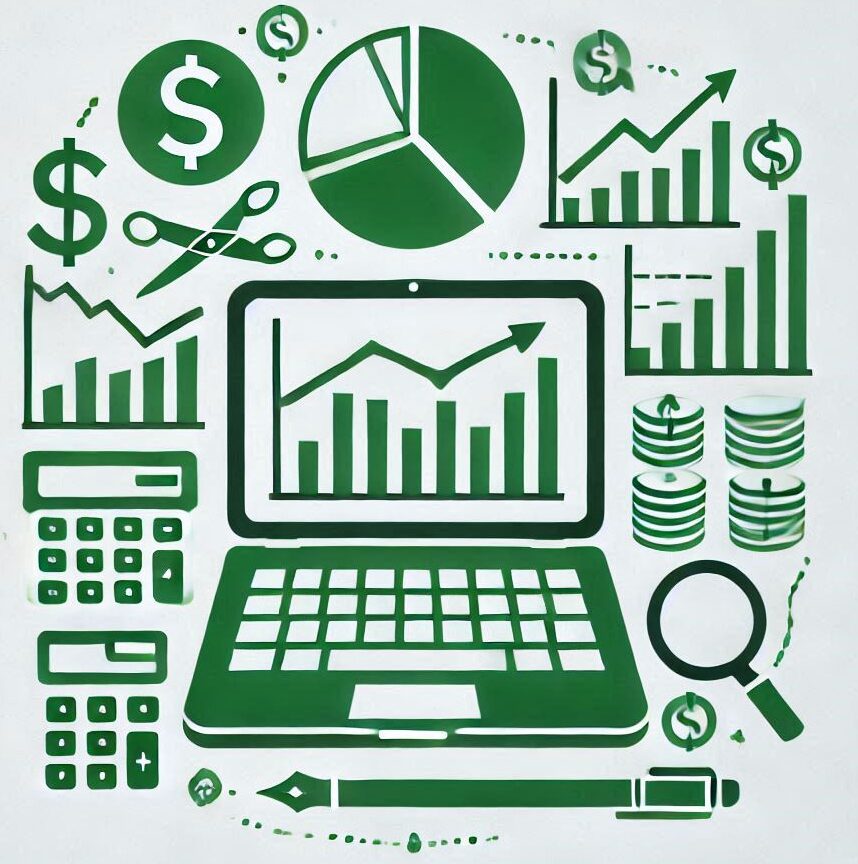Excel is like that handy multipurpose tool you didn’t know you needed until you discovered it. Used by businesses everywhere, Excel’s got a power-packed mix of functions that make it essential for creating financial models. From crunching numbers to visual representation, Excel wears many hats and does it effortlessly.
So why do the finance folks love Excel so much? Well, financial analysts swear by it because it brings flexibility and ease to managing tons of data. Excel isn’t just about filling cells; it’s about transforming raw numbers into something understandable and actionable.
The accessibility of Excel is another reason for its popularity. It’s not locked behind a gilded wall. Pretty much anyone can get their hands on it. And it’s not just for the tech whizzes—it’s user-friendly enough to be picked up quickly with a bit of practice.
What makes Excel stand out? It’s the tiny details like functions and features. You can roll up your sleeves and dive into Excel’s vast formula library. Tools like VLOOKUP, pivot tables, and conditional formatting are the backbone when structuring financial models.
Picture it this way: financial modeling in Excel isn’t just about number crunching. It’s about telling a story with data. And once you’ve got your head around the basics, the sky’s the limit. The flexibility and potential that Excel offers are unmatched.
Getting Started: Essential Excel Skills for Beginners
Mastering Excel is like getting the keys to a vault of financial insights. Understanding basics like data entry, formulas, and how functions work opens up a world of possibilities. Let’s break it down: you don’t need to be an Excel wizard to start building strong models. It’s about nailing down those foundational skills that make all the difference.
Getting comfy with Excel’s interface is a must. We’re talking about worksheets, cells, and knowing your way around data organization. Picture Excel as a giant puzzle board, where each piece has its place. Moving data efficiently can make your workflow smoother than a fresh jar of peanut butter.
Customizing your Excel workspace can turn chaos into order. From adjusting the toolbar to personalizing displays, these small tweaks can hugely boost efficiency. Understanding how to make Excel work for you rather than against you is a game-changer.
And hey, don’t underestimate the power of shortcuts. Imagine zipping through tasks with lightning-fast keyboard shortcuts that save precious time and ramp up productivity. It’s like having a secret weapon in your toolkit. Spend a bit of time getting these under your belt, and you’ll be spinning spreadsheets like a pro in no time.
Building Your First Financial Model: Step-by-Step Guide
Creating your first financial model in Excel is like building a sturdy Lego castle. It starts with understanding the basic building blocks: inputs, processing, and outputs. Inputs are your raw data, processing is what you do with that data, and outputs are the polished results you present.
Diving into layout design is crucial. A clear and organized structure makes all the difference. Think of it as setting up a neat kitchen where you know exactly where everything is, making cooking way more enjoyable. In Excel, this means a clean flow from inputs to calculations to output.
To get hands-on experience, try building a simple budget. Excel templates are a good starting point, giving you an idea of how to arrange data and set up calculations. It’s a learning curve, but once you create a functional model, you’re really on your way to becoming proficient.
While you’re working on your model, watch out for common slip-ups like inconsistent data entries or misaligned formulae. A reliable model is all about precision, so double-checking work and keeping data consistent is key. Use tools like error-checking functions to keep everything on point.
Best Practices and Real-World Applications of Excel Financial Modeling
When it comes to financial modeling, keeping your work documented and versions controlled can’t be overstated. It’s like having a safety net when making revisions. Keeping a log of changes helps maintain a clear path through complex spreadsheets, making any updates or troubleshooting seamless.
Excel’s versatility shines when you explore scenario analysis—testing different financial outcomes. Imagine having a crystal ball that shows how different strategies might impact a company’s financial health. This forward-thinking approach helps in making robust business decisions, and Excel’s tools like data tables and scenario manager make it doable.
Take inspiration from real-life. Companies worldwide harness Excel for tasks ranging from straightforward accounting to deep financial forecasting. Seeing this in action can be inspiring, offering insights into how you can use Excel’s capabilities to support business strategies and valuations effectively.
And where’s Excel headed? It’s not just resting on its laurels. Integrating with other software and technologies, like cloud computing and data visualization tools, is opening new doors for financial modeling. Staying updated with these trends can give you an edge and keep your skills fresh in an evolving landscape.
